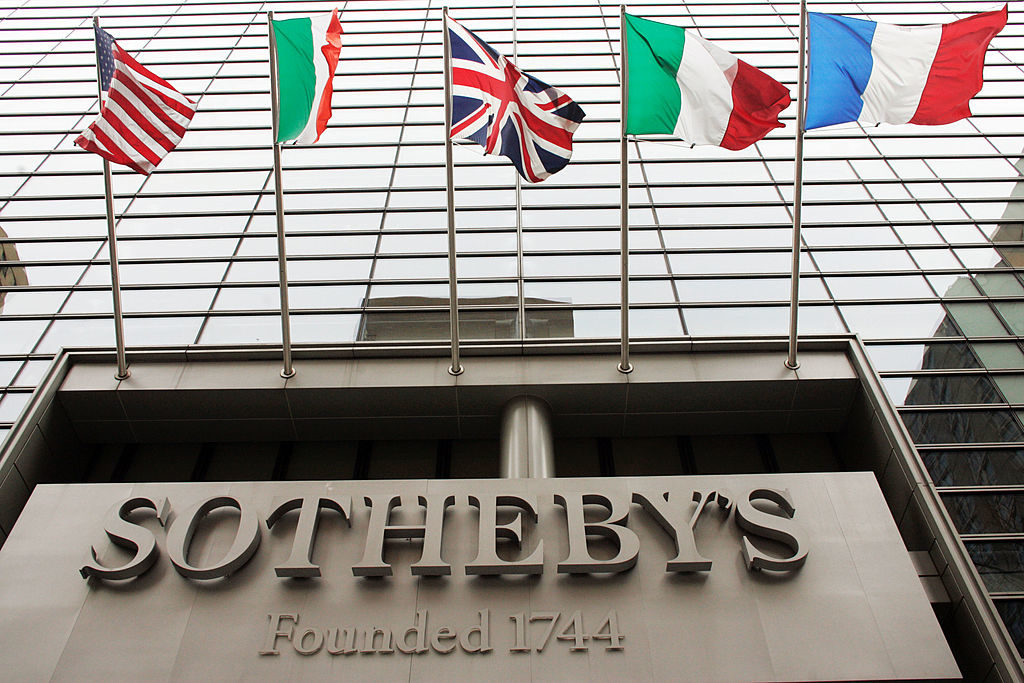Auctions
Ahead of Next Week’s Sales, Sotheby’s Beats First-Quarter Expectations and Reassesses Guarantees
Executives explain their newly cautious approach to auction guarantees.

Executives explain their newly cautious approach to auction guarantees.

Eileen Kinsella

Sotheby’s reported its first-quarter earnings this morning with results that beat analysts’ expectations and showed an improvement from last year’s results amid a typically quiet period in its business cycle.
The net loss for the first quarter was $11.3 million, or 21 cents a share—significantly narrower than the loss in the first quarter of 2016 ($25.9 million, or 41 cents a share). Revenue also grew, to $187.5 million, up from $106.5 million last year. Private sales increased 41 percent for the quarter, Sotheby’s reported, as a result of both a stronger market and internal efforts targeting this “critical strategic initiative for future growth,” according to a statement.
Given that major New York auctions take place each year in May and November—the second and fourth quarters, respectively—the first and third quarters of the calendar year tend to be less reflective of the health of the overall auction industry.

Tad Smith at Gangs of New York Gala in 2015. © Patrick McMullan. Courtesy of Sean Zanni/PatrickMcMullan.com.
In a conference call this morning with analysts and investors, Sotheby’s CEO Tad Smith reminded the audience of this, stating: “As a reminder, the first quarter is a seasonally small one in which Sotheby’s usually earns a loss.”
Smith focused on what he termed several “key points” including the state of the market for art and luxury goods. He focused on healthy demand from Asian buyers at April Hong Kong sales of art and jewelry as well as broad demand for wine across all markets.
But the call was more of a forward-looking assessment than an in-depth recap of the first quarter. Smith expressed satisfaction with the consignments in place for next week’s major Impressionist, Modern and contemporary auctions. And he gave interesting color on guarantees, always a closely-watched aspect of any major auction season. He noted: “For next week’s sales, we currently have $217 million in gross guarantees outstanding to consignors, but only $40 million net guarantee exposure after offsetting the risk with irrevocable bids.”
Here’s a translation for non-auction wonks. An irrevocable bid, also known as “third party guarantee,” is a deal in which the auction house finds an outside buyer to commit to a minimum bid on a work before an auction. The idea is to convince nervous consignors to commit while mitigating financial risk for the auction house and allowing the outside investor to share in the potential upside if a work outperforms expectations.
Said Smith: “In other words, 20 of our 36 guaranteed lots for those auctions have irrevocable bids that ensure us returns consistent with our profitability requirements before the sales even begin. This is an extraordinary accomplishment for both clients and shareholders and even more so when you consider the expanding list of Sotheby’s clients who are backing our guarantees.”
Essentially, Sotheby’s has already secured willing buyers for many of the most valuable works in the sales next week—and the company is only on the hook for the $40 million of its own money that it used to secure the remainder of the guaranteed consignments.
Sotheby’s CFO Mike Goss elaborated even further, later on in the call, when asked about guarantees by an analyst. Said Goss, “One of the things that drove our guarantee performance last year was that we had written some well in advance of the auction, which we’re now being a lot more cautious about. So in this year’s first quarter, our guarantee performance is better…because we’ve hedged that risk in a smarter way and written the guarantees at prices we want to own the painting at, not prices that it takes to get the consignment. We’re also writing those guarantees closer to the time of the sale so we’re not taking as much market risk as we did a year ago.”
Given the major shakeups at all houses with respect to top talent in the past two years, Smith also acknowledged that industry competition remains intense. “It is true that the market for consignments has been extremely competitive. The Wall Street Journal did a piece at the end of February pointing to the arrival from ‘garden leave’ of a number of new executives at our competitors, and it is fair to say our competitors have been very aggressive in the market.”
Smith also noted that this was his ninth earnings call since assuming the helm of the company two years ago. Now, the company is “no longer merely an auction house,” he said. It continues to expand its art advisory business, Art Agency Partners, and a new estate advisory business led by Christy Maclear, the former director of the Rauschenberg Foundation. “Contrary to the opinions of some pundits, both of these advisory businesses are delivering where it matters—with our clients and shareholders,” Smith said.

One year performance of Sotheby’s stock price. Source: Yahoo Finance.
Sotheby’s stock, which trades under the symbol “BID” on the New York Stock Exchange, was up about 30 percent this morning, trading just under $48 per share. It has seen a healthy overall jump from the beginning of 2017, when it was trading around $39.